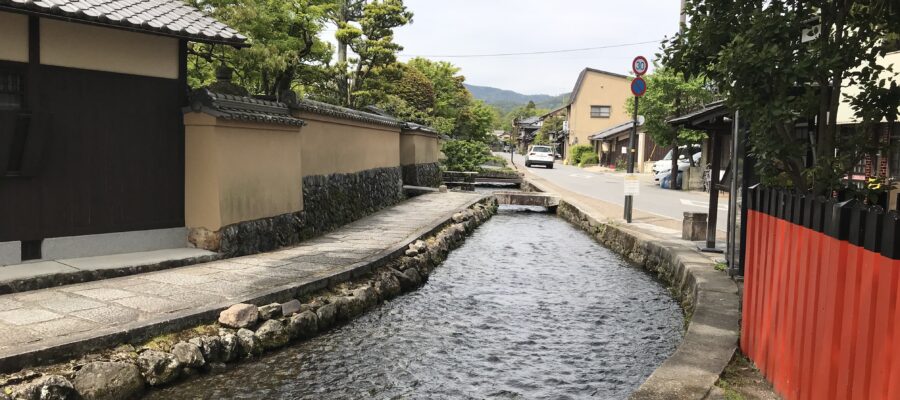日曜市以来の訪問
下賀茂神社にはよく行くのですが、鴨川の少し上流にある上賀茂神社に行くことはあまりありません。初めて行ったのは10年以上前に、境内で行われる日曜市に妻が手作りのケーキを販売した時に、その店番をした時でした。当時は、私自身、寺社仏閣への興味をそれほど持っていなかったので、きちんとお参りしたかどうかも記憶が定かではありません。
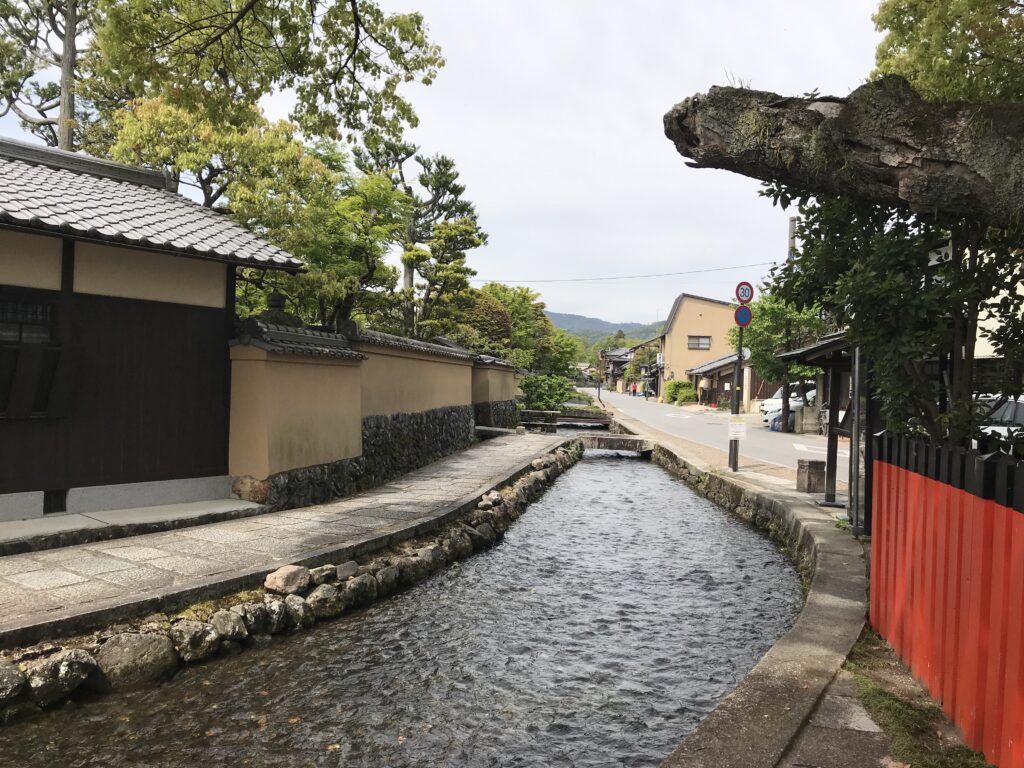
室町時代からの神官の屋敷町
今回は、上賀茂伝統的建造物保存地区を散策していからお参りに行くことにしました。この地区は室町時代から上賀茂神社の神官の屋敷町として街並みが形成されたそうです。地区の中心を通る明神川の左右に、独特の雰囲気を持った街並みが広がっています。映画のセットのような景観で、海外の方を案内したら喜んでいただけると感じました。
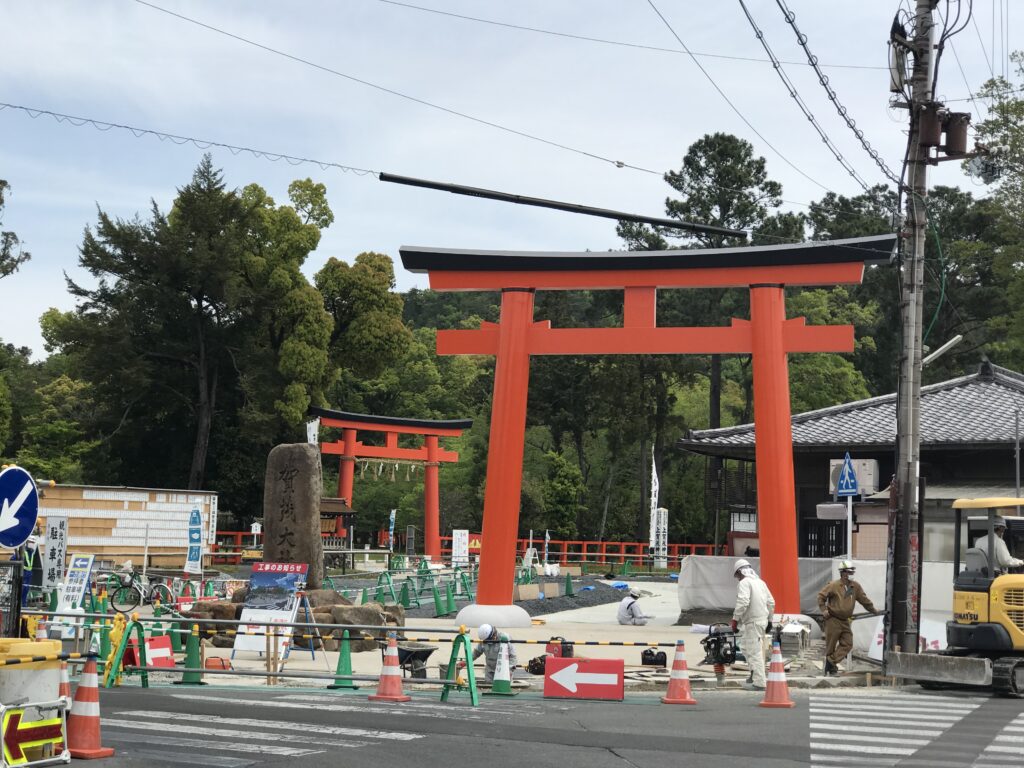
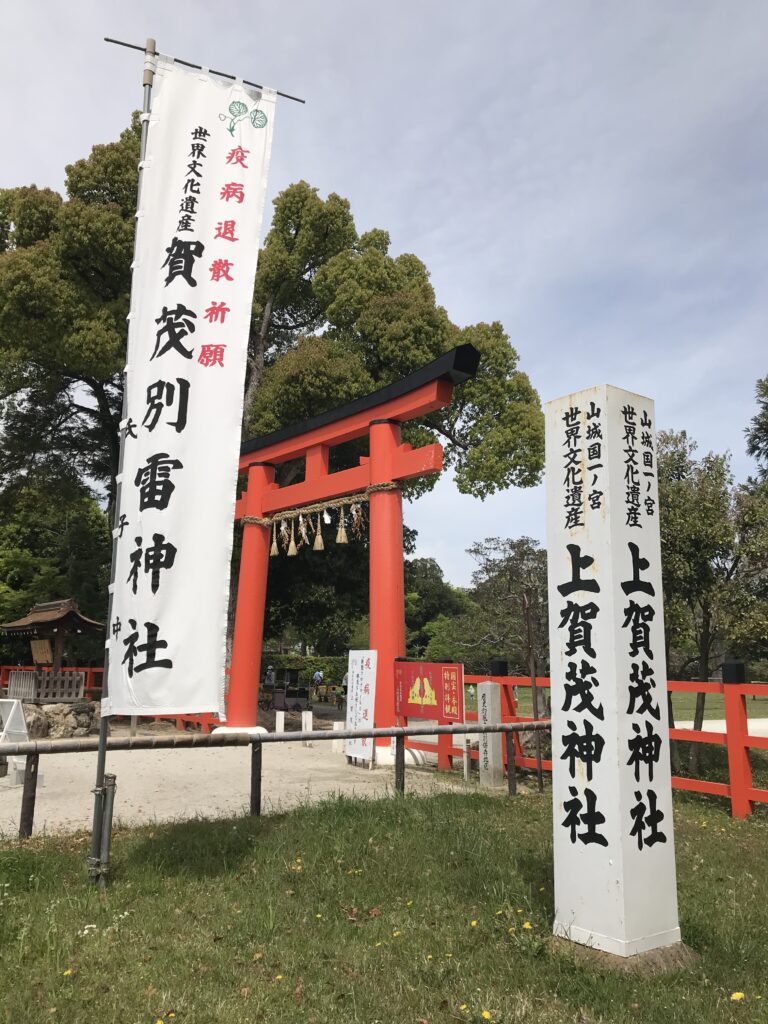
保存地区を抜けて、上賀茂神社に入っていきます。訪問日は、神社の前の道路に大きな鳥居を据え付ける工事をしていました。一の鳥居、二の鳥居を通って境内に入っていきます。立砂(白砂を積み上げた2つの山)がある細殿の前を通過して、さらに奥に向かいます。
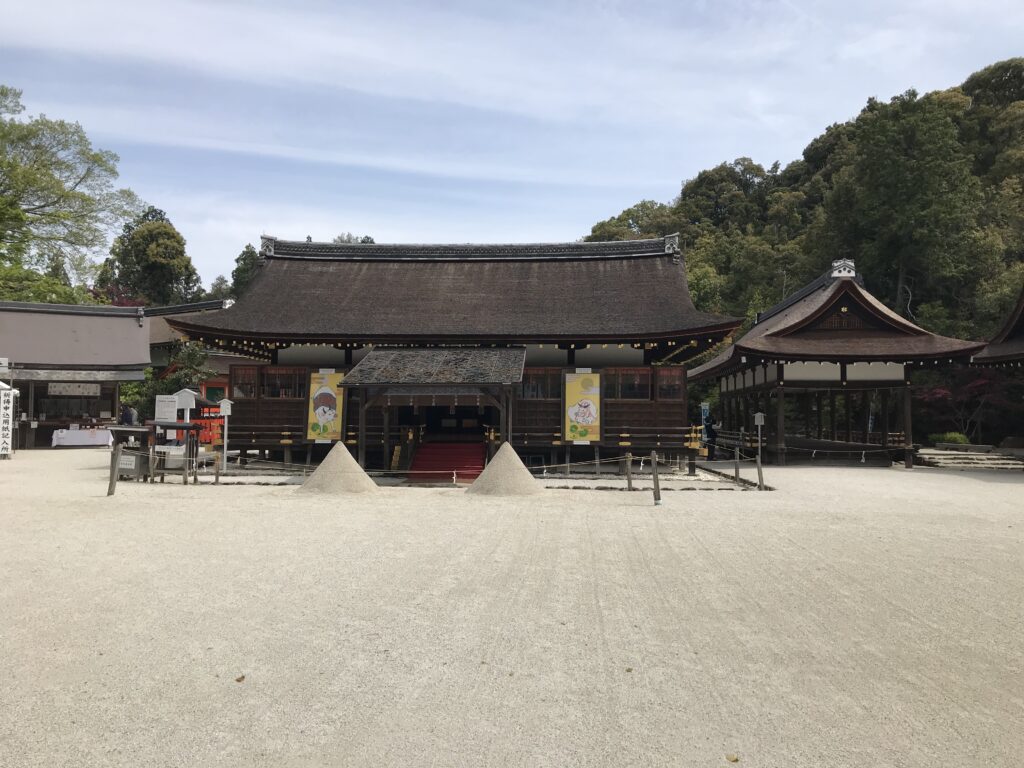
パワーをいただき、願い石にもタッチ
立派な楼門の前で呼吸を整えました。国宝の本殿・権殿に向かってお祈りをしました。御祭神は、雷のごとく強い力で厄を払う厄除けの神様です。パワーをいただけたような気がしました。参拝後、渉渓園を歩いてみました。
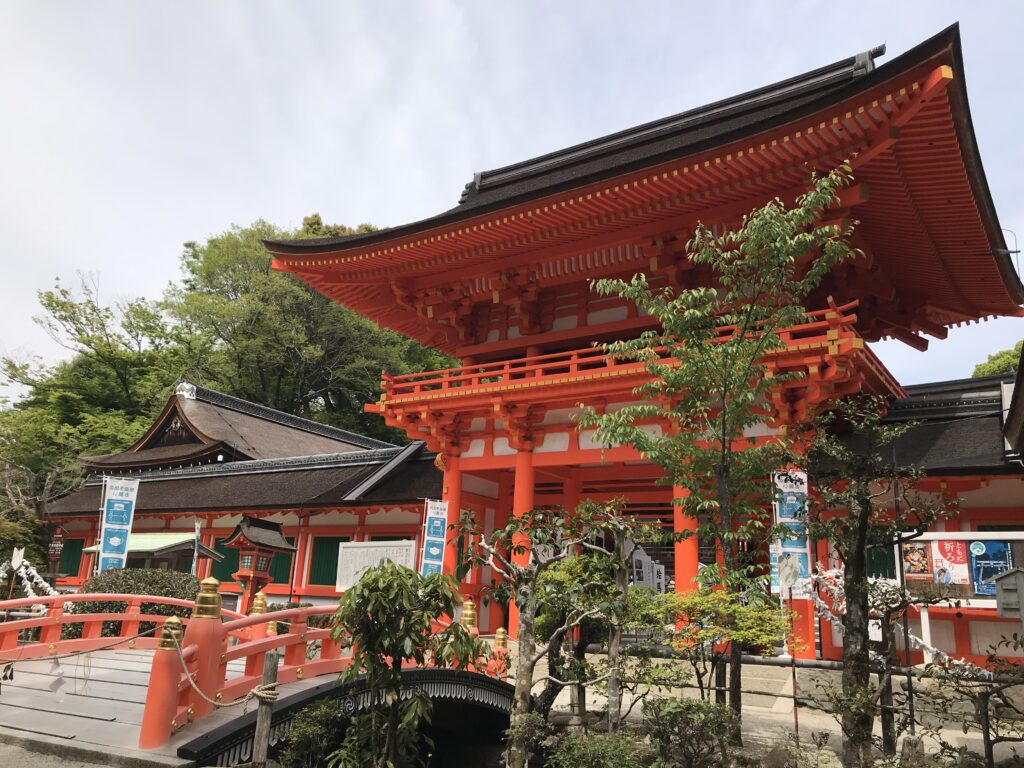
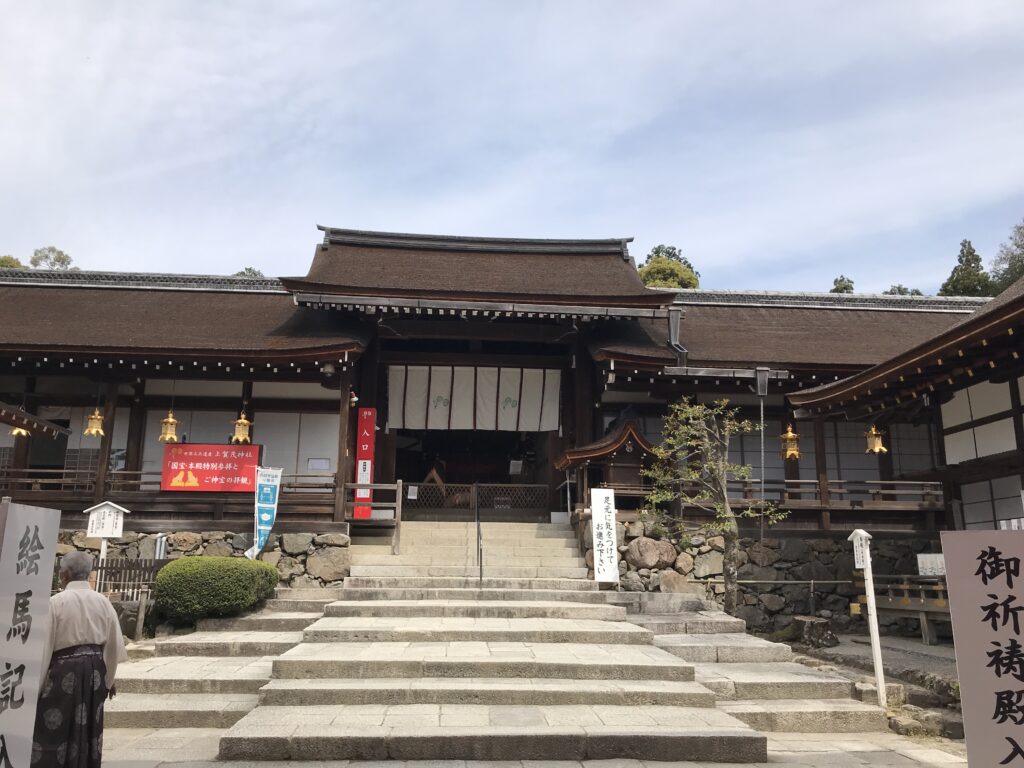
この渉渓園では、平安装束に身を包んだ歌人たちが、川に盃を流しながら和歌を詠む「賀茂曲水宴」などの祭事が行われます。ここには「願い石」(陰陽石)と呼ばれる大きな石が鎮座しています。この「願い石」を両手で同時に触れ、そのパワーを頂いてから、すぐ近くの賀茂山口神社をお参りすると良いそうです。(完)
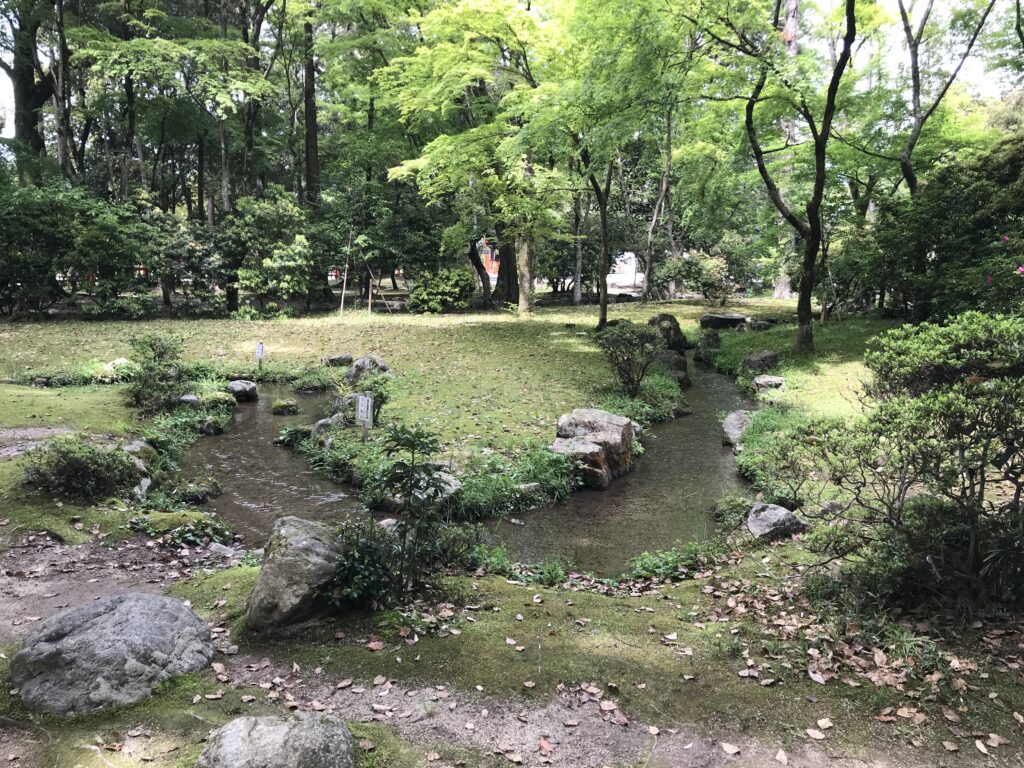
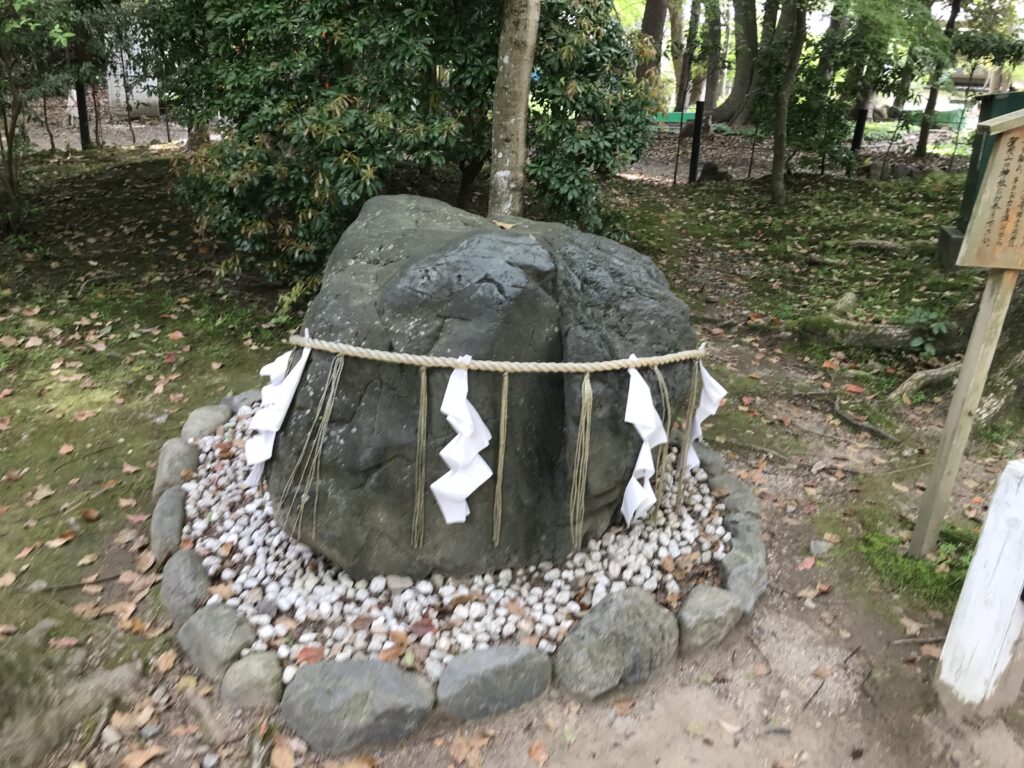
上賀茂神社の御朱印
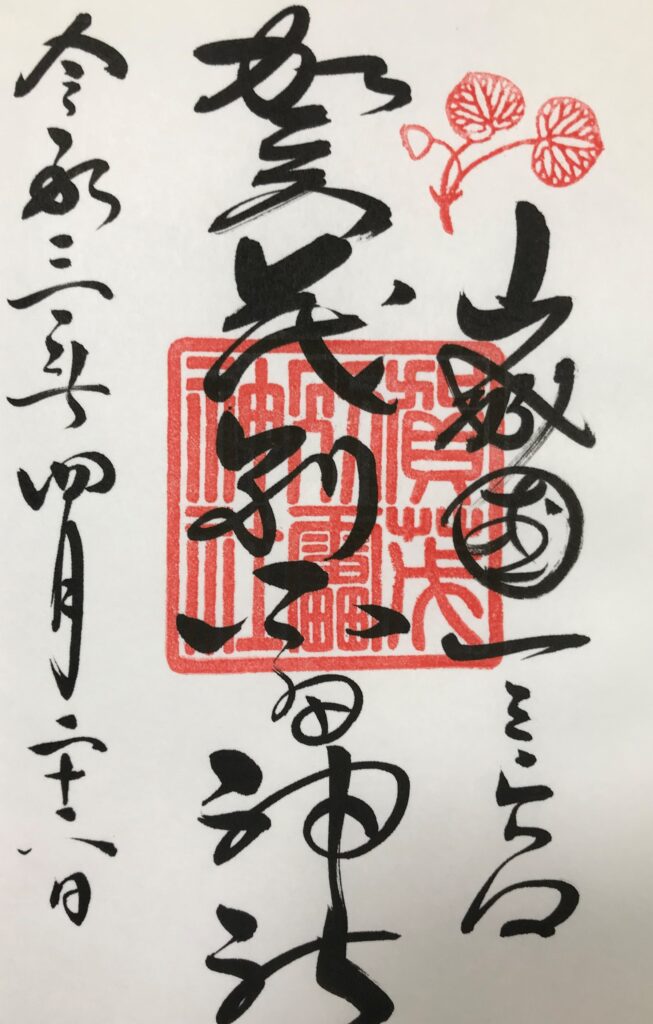
京都のお土産
千枚漬けを含めた京都の漬物セット。お取り寄せ、贈答用に便利な詰め合わせです。京漬物が好きな人にとっては直球ど真ん中でしょうか。

大安 味さわやか 産直 直FF-40 お歳暮 御歳暮 漬物 漬け物 ギフト 京都 送料無料 京漬物 セット ギフト 食べ物 詰め合わせ 千枚漬 味すぐき 内祝い お祝い 人気 贈り物 お土産
価格:4,320円
(2021/11/27 18:05時点)
感想(19件)
Kamigamo Shrine
Although I often visit Shimogamo Shrine, I rarely go to Kamigamo Shrine, which is located a little upstream from the Kamo River. The first time I went there was more than 10 years ago, when my wife took care of a Sunday market held on the shrine grounds where she sold homemade cakes. At the time, I myself did not have much interest in temples and shrines, so I am not even sure if I visited the shrine properly or not.
This time, I decided to visit the temple after taking a walk in the Kamigamo Traditional Buildings Preservation District. This area is said to have been a residential area for the priests of Kamigamo Shrine since the Muromachi period (1336-1573). The streets have a unique atmosphere on either side of the Myojin River, which runs through the center of the district. The scenery looks like a movie set, and I felt that it would please foreign visitors if I showed them around.
Passing through the preserved area, I entered Kamigamo Shrine. On the day of my visit, a large torii gate was being installed on the road in front of the shrine. I entered the shrine grounds through the Ichino-torii and Ni-no-torii gates. Passing in front of Hosodono, where there are tate-suna (two piles of white sand), I headed further into the shrine.
I took a moment to catch my breath in front of the magnificent Romon Gate. I prayed toward the main shrine, Gonden, which is a national treasure. The deity of the shrine is the god of exorcism, who is as powerful as lightning to ward off bad luck. I felt as if I had received power. After praying, I walked around Shokeien.
In this Shokeien Garden, festivals such as “Kamo Kyokusui-no-En,” where poets dressed in Heian costume recite waka poems while pouring sake cups into the river, are held. A large stone called a “wishing stone” (yin-yang-ishi) sits here. It is said that it is best to touch this “wishing stone” with both hands at the same time to receive its power, and then visit the nearby Kamo Yamaguchi Shrine. ( End )
Sanctuaire de Kamigamo
Bien que je visite souvent le sanctuaire de Shimogamo, je vais rarement au sanctuaire de Kamigamo, qui est situé un peu en amont de la rivière Kamo. La première fois que j’y suis allé, c’était il y a plus de 10 ans, lorsque ma femme s’occupait d’un marché dominical qui se tenait dans l’enceinte du sanctuaire et où elle vendait des gâteaux faits maison. À l’époque, je ne m’intéressais pas beaucoup aux temples et aux sanctuaires, aussi je ne suis même pas sûr d’avoir visité le sanctuaire correctement ou non.
Cette fois-ci, j’ai décidé de visiter le temple après m’être promené dans le district de préservation des bâtiments traditionnels de Kamigamo. On dit que cette zone était un quartier résidentiel pour les prêtres du sanctuaire de Kamigamo depuis la période Muromachi (1336-1573). Les rues ont une atmosphère unique de part et d’autre de la rivière Myojin, qui traverse le centre du quartier. Le paysage ressemble à un décor de film, et j’ai pensé que cela plairait aux visiteurs étrangers si je leur montrais les lieux.
Après avoir traversé la zone préservée, je suis entré dans le sanctuaire de Kamigamo. Le jour de ma visite, une grande porte torii était en cours d’installation sur la route devant le sanctuaire. Je suis entré dans l’enceinte du sanctuaire par les portes Ichino-torii et Ni-no-torii. En passant devant Hosodono, où se trouvent des tate-suna (deux tas de sable blanc), je me suis dirigé plus loin dans le sanctuaire.
J’ai pris un moment pour reprendre mon souffle devant la magnifique porte Romon. J’ai prié en direction du sanctuaire principal, Gonden, qui est un trésor national. La divinité du sanctuaire est le dieu de l’exorcisme, qui est aussi puissant que la foudre pour éloigner le mauvais sort. J’ai eu l’impression d’avoir reçu un pouvoir. Après avoir prié, j’ai fait le tour de Shokeien.
Dans ce jardin de Shokeien, des festivals tels que le “Kamo Kyokusui-no-En”, où des poètes habillés en costume Heian récitent des poèmes waka tout en versant des tasses de saké dans la rivière, sont organisés. Une grande pierre appelée “pierre à souhaits” (yin-yang-ishi) se trouve ici. On dit qu’il est préférable de toucher cette “pierre à souhaits” avec les deux mains en même temps pour recevoir son pouvoir, puis de visiter le sanctuaire Kamo Yamaguchi tout proche. ( Fin )
